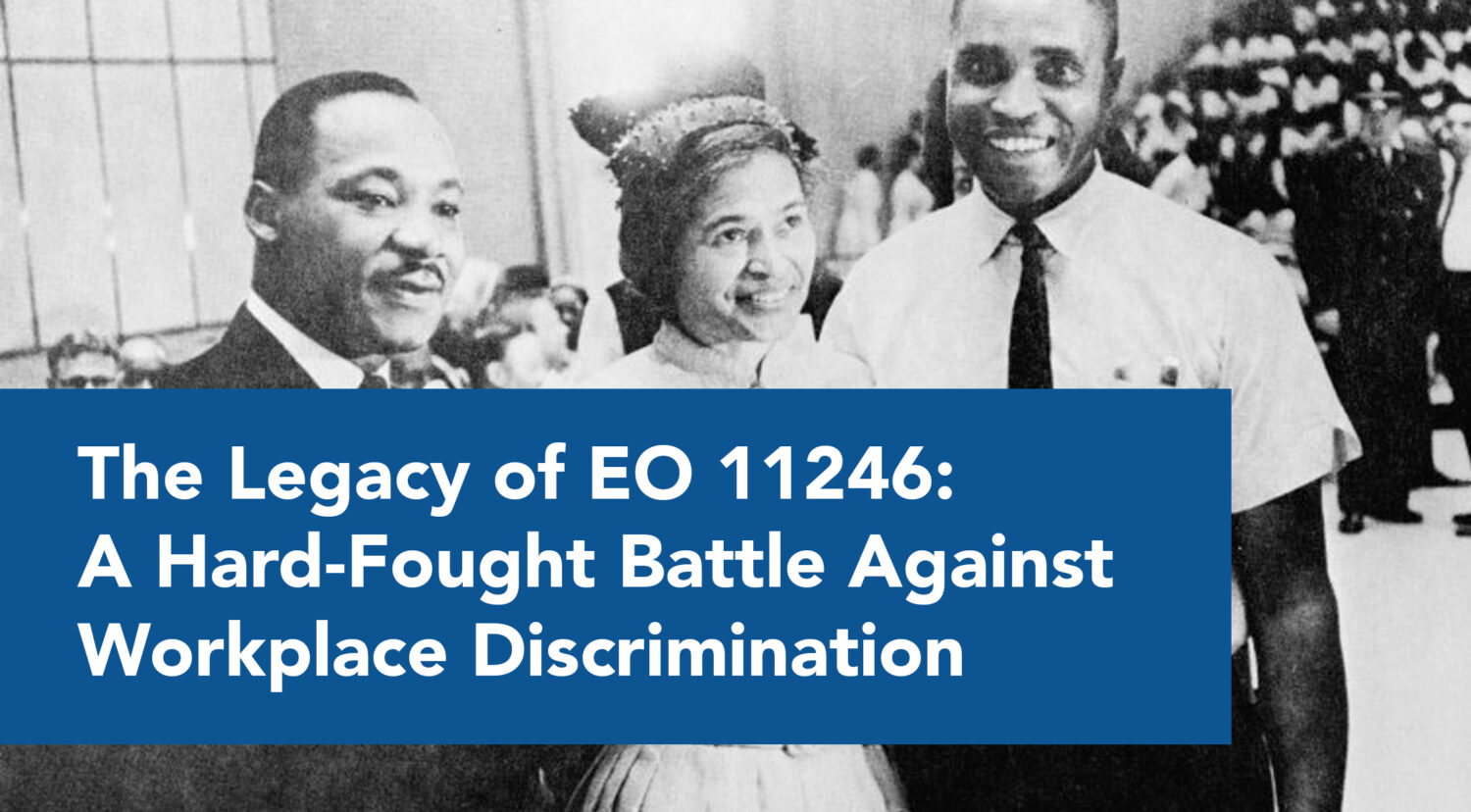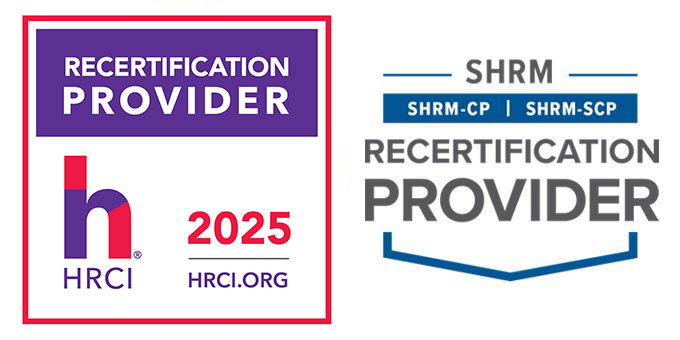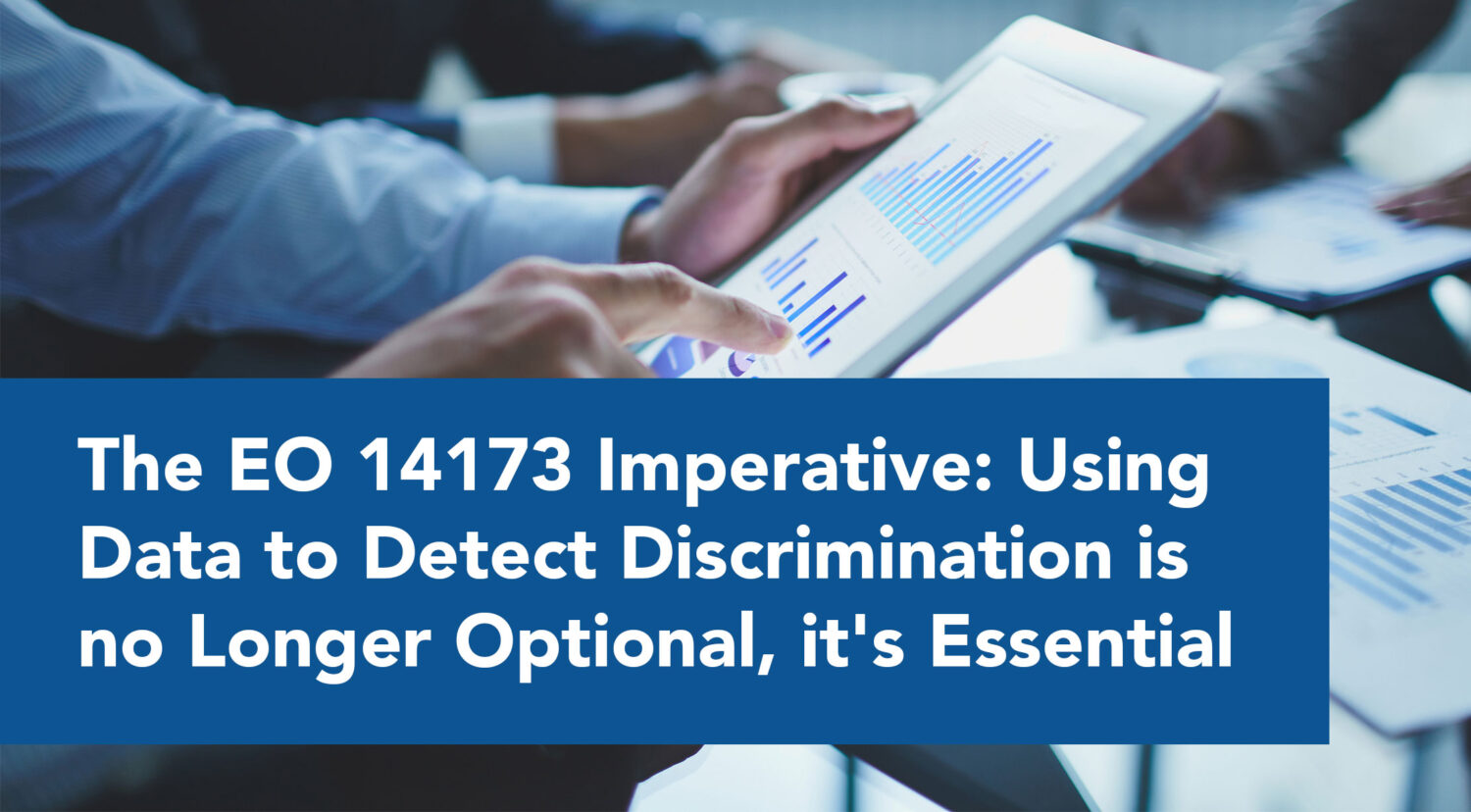

For nearly six decades, Executive Order 11246 has stood as a cornerstone in the fight against workplace discrimination. More than a regulatory requirement, it has served as a powerful tool for progress—challenging employers to confront systemic bias and build fair, inclusive hiring practices.
Before EO 11246, discrimination in the workplace wasn’t just tolerated—it was institutionalized. Women were routinely discouraged from pursuing careers in science, engineering, medicine, and other technical fields, based on outdated stereotypes about their aptitude. Meanwhile, minorities were largely excluded from professional and managerial roles, confined to low-wage labor under the false assumption that they lacked the capacity for leadership or skilled work.
This was not a simple oversight. It was a systemic injustice—one that fueled the Civil Rights Movement and, ultimately, led to the creation of Title VII of the Civil Rights Act and EO 11246 in 1965. The Executive Order called for more than passive compliance; it demanded proactive efforts. It required federal contractors to take meaningful steps—good faith efforts—to expand opportunity, increase access, and redefine how talent is recognized and cultivated.
At its core, EO 11246 tackled two key barriers: access to employment and access to education. Historically, marginalized groups were denied the education and training needed to compete. Minorities were often burdened with economic survival, while women were pushed into domestic roles. As a result, generations were locked out of career advancement—not because they lacked potential, but because the system failed to invest in them.
EO 11246 helped change that.
It encouraged employers to offer tuition assistance, sponsor scholarships, and invest in the development of employees—regardless of race, gender, or background. These programs not only empowered individuals but strengthened businesses, creating more competitive, innovative, and diverse workforces.
The truth is, when we exclude people from opportunity, we limit our own potential as a nation. To this day, the U.S. remains heavily reliant on foreign talent in technical and scientific fields—a reflection of the gaps in our domestic education system. Many of the countries we recruit from offer affordable education to all, while here, access remains uneven. EO 11246 aimed to correct that imbalance, recognizing that real equity requires both opportunity and support.
This Executive Order didn’t just shift policies—it shifted perspectives. It redefined fairness, pushed organizations to lead with accountability, and opened doors that had long been closed.
Now, we find ourselves at a crossroads.
The progress made under EO 11246 was not accidental—it was the result of intentional, persistent effort. If we walk away from it now, we risk undoing decades of hard-won progress. The question is no longer whether EO 11246 made a difference. The question is whether we have the will to continue its legacy.
Because equity is not a one-time achievement—it’s an ongoing responsibility.
The enforcement of Executive Order 14173 is transforming compliance requirements for federal contractors. Join us on April 30, 2025, at 10:30 AM PST for an exclusive virtual roundtable led by government officials for clear, actionable guidance to navigate the evolving regulatory landscape confidently.
Need guidance on federal contractor compliance? Contact us today for expert insights and support.





